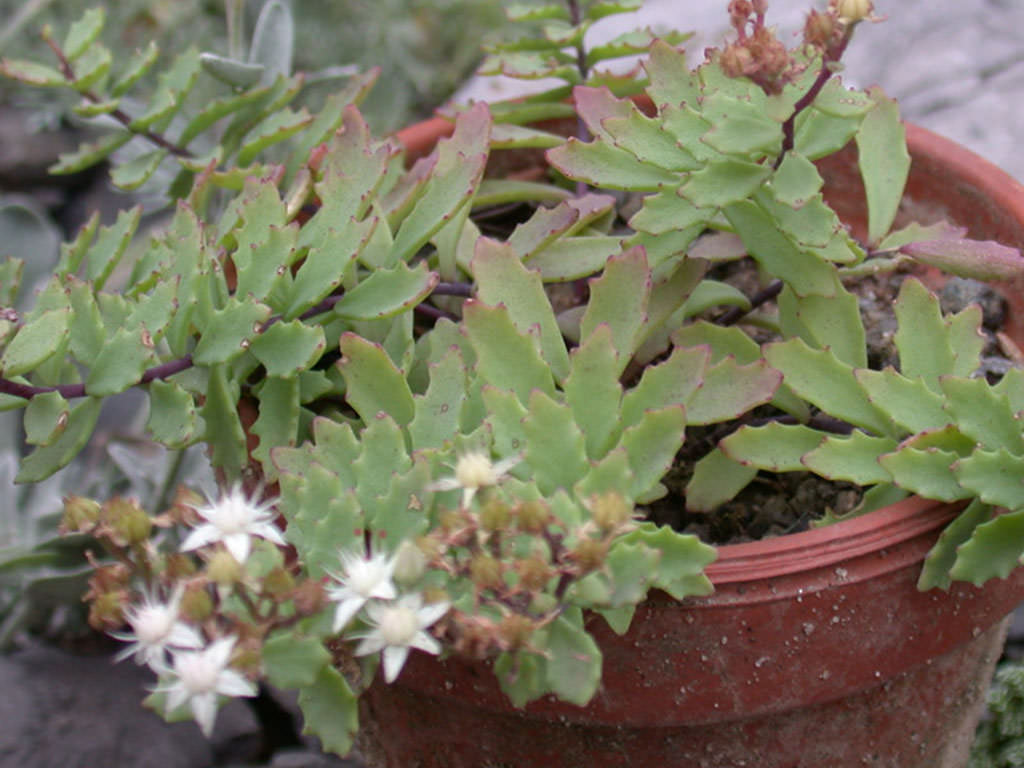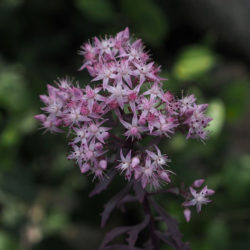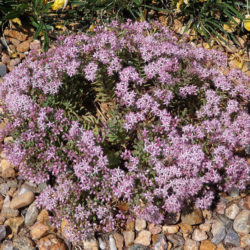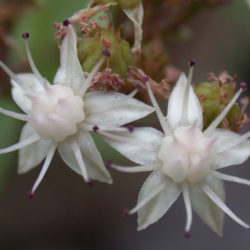Scientific Name
Hylotelephium tatarinowii (Maxim.) H.Ohba
Synonym(s)
Hylotelephium almae, Hylotelephium tatarinowii var. integrifolium, Hylotelephium tatarinowii var. tatarinowii, Sedum almae, Sedum definitum, Sedum pekinense, Sedum tatarinowii, Sedum tatarinowii var. integrifolium
Scientific Classification
Family: Crassulaceae
Subfamily: Sempervivoideae
Tribe: Telephieae
Genus: Hylotelephium
Origin
This species is native to Mongolia and North China. It occurs in rock crevices in mountainous areas at elevations between 3,300 to 9,800 feet (1000-3000 m).
Description
Hylotelephium tatarinowii, formerly known as Sedum tatarinowii, is a splendid clump-forming succulent with thick tuberous roots and many simple, erect or ascending stems with unique grey-green leaves. The stems grow up to 6 inches (15 cm) long. Leaves are alternate, variable in shape from oblanceolate to linear-oblanceolate, and have crenate margins, sometimes entire or with few scattered rounded teeth. They are up to 1.2 inches (3 cm) long and up to 0.3 inches (0.7 cm) wide. Flowers are star-shaped with white or pinkish petals and purple-red anthers. They appear in terminal clusters in summer.
Etymology
The specific epithet "tatarinowii (tat-TAR-ee-NOV-ee-eye)" honors Alexander Tatarinov (1817-1886), a Russian diplomat, physician, and writer, the author of the Atlas of medicinal plants of China.

How to Grow and Care for Hylotelephium tatarinowii
Light: This succulent prefers full sun. It tolerates light to partial shade in hot summer climates but will produce weak, floppy growth when grown in too much shade. Plant your H. tatarinowii in an area of your garden that gets 6 hours of sunlight daily.
Soil: H. tatarinowii does not need rich soil, but it does need excellent drainage. Choose a commercial potting mix for succulents, or make one yourself.
Hardiness: This plant has a tolerance to heat and drought and is cold-hardy, making it a popular outdoor succulent. H. tatarinowii can withstand temperatures as low as -40 to 30 °F (-40 to -1.1 °C), USDA hardiness zones 3a to 9b.
Watering: The best way to water H. tatarinowii is to use the "soak and dry" method. Get the soil completely wet, and then wait until it is dry before watering again.
Fertilizing: Feed annually with a balanced fertilizer. According to the package directions, apply the fertilizer to the soil in spring as new growth appears.
Repotting: Plants in containers do require little more care than those in gardens. Repot your H. tatarinowii when it outgrows its current pot by moving it to a larger pot to hold the plant better. Spring is the best time to repot this plant. Make sure the soil is dry before you begin the repotting process.
Propagation: This succulent can be grown from seeds, division, or stem cuttings. Sow seeds in spring. Dividing your H. tatarinowii is very easy and can be carried out at almost any time in the growing season, though it is probably best done in spring or early summer. Propagate by stem cuttings in summer.
Learn more at How to Grow and Care for Hylotelephium.
Toxicity of Hylotelephium tatarinowii
H. tatarinowii can be mildly toxic to humans and animals when ingested.
Links
- Back to genus Hylotelephium
- Succupedia: Browse succulents by Scientific Name, Common Name, Genus, Family, USDA Hardiness Zone, Origin, or cacti by Genus
Photo Gallery
Click on a photo to see a larger version.


